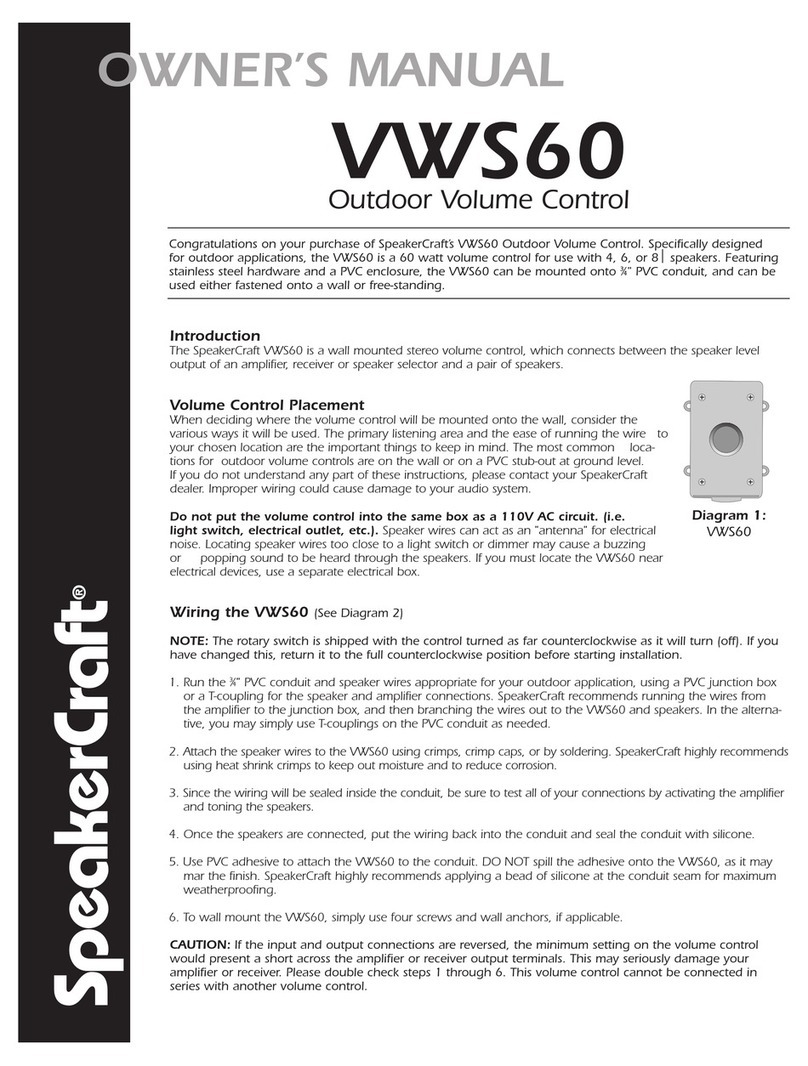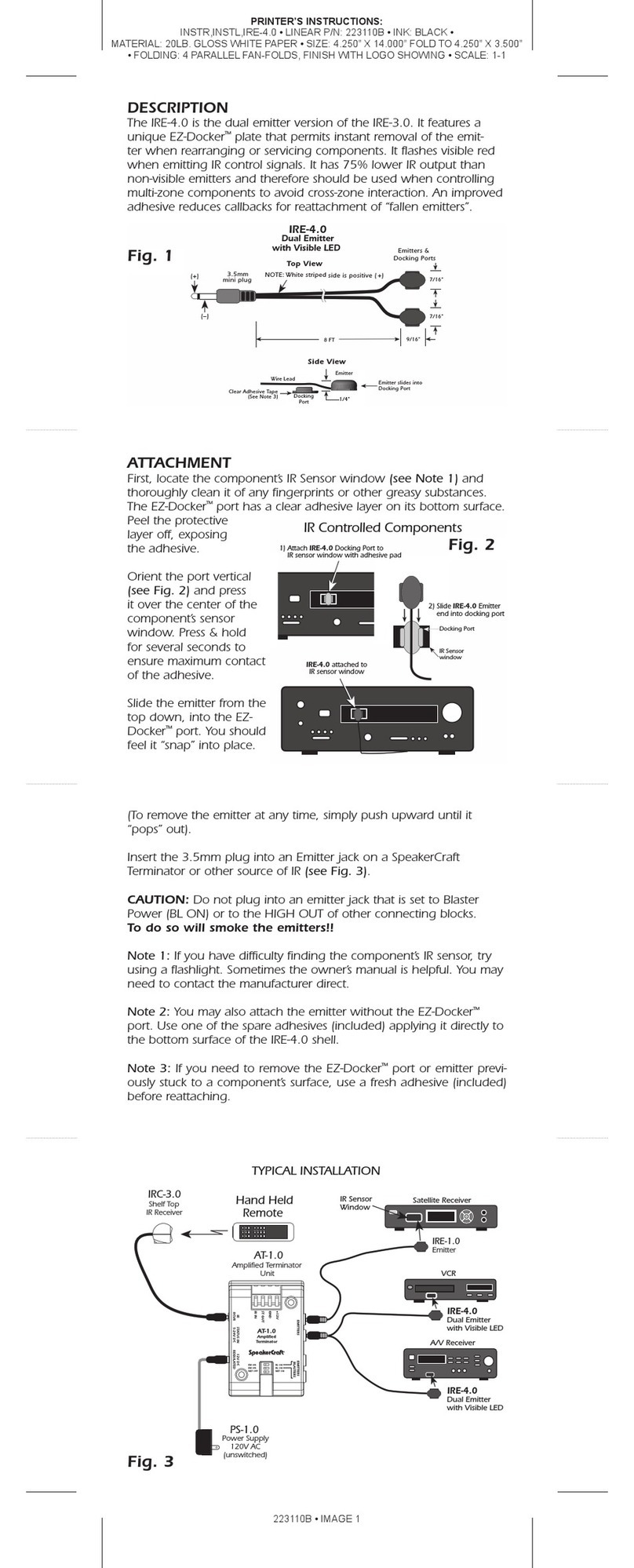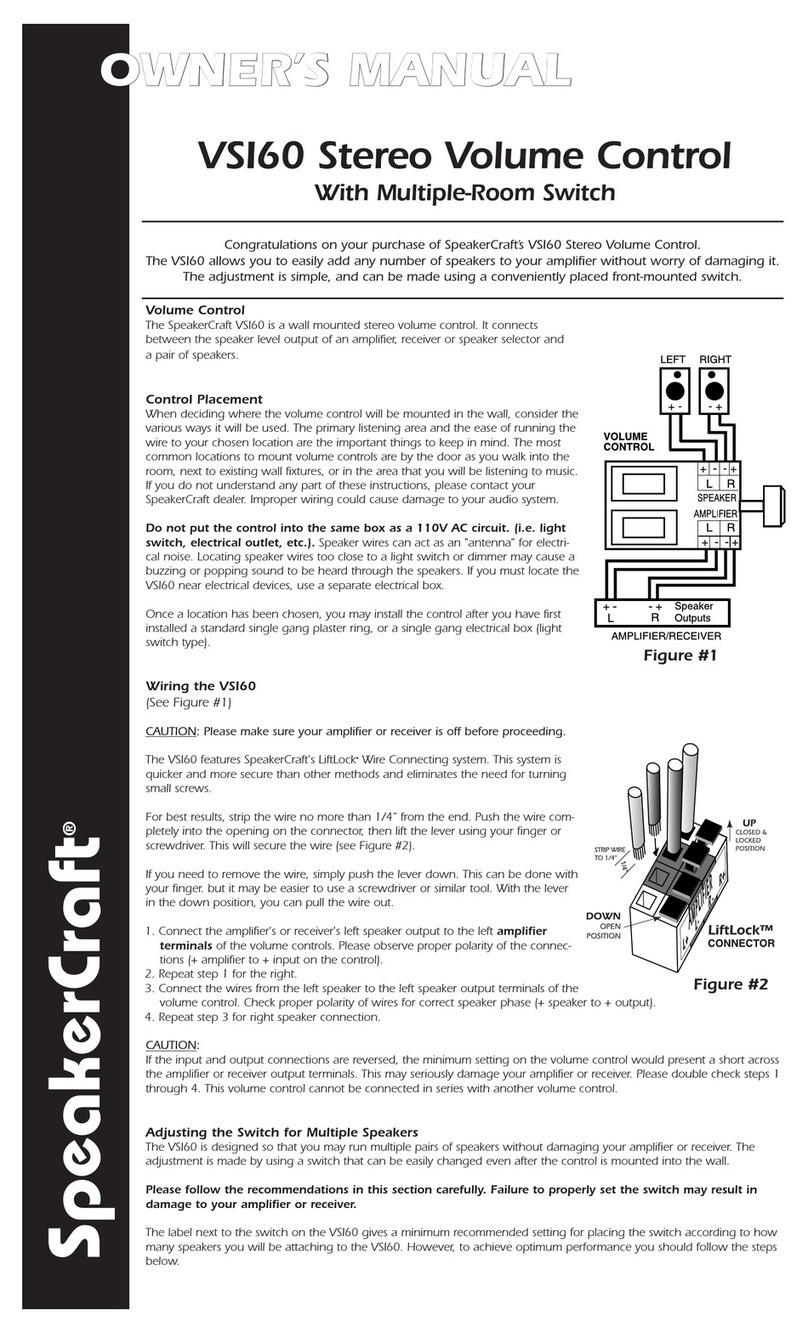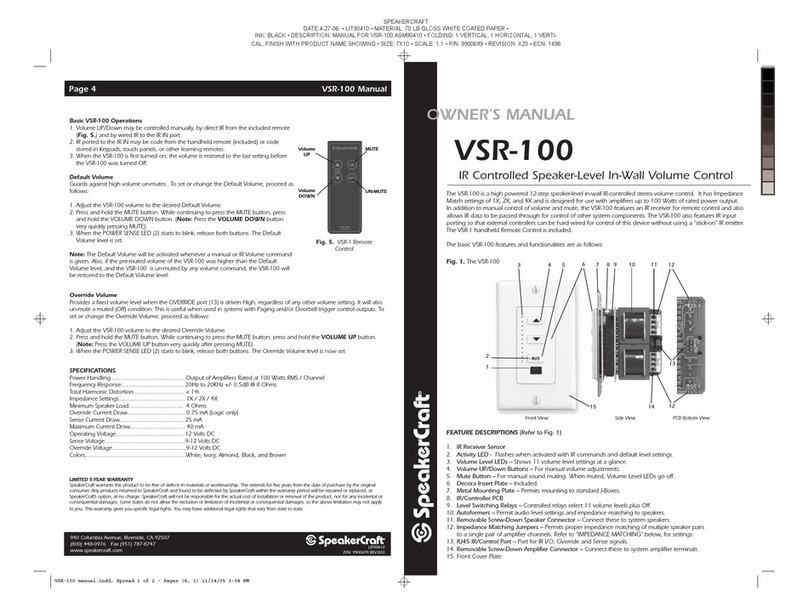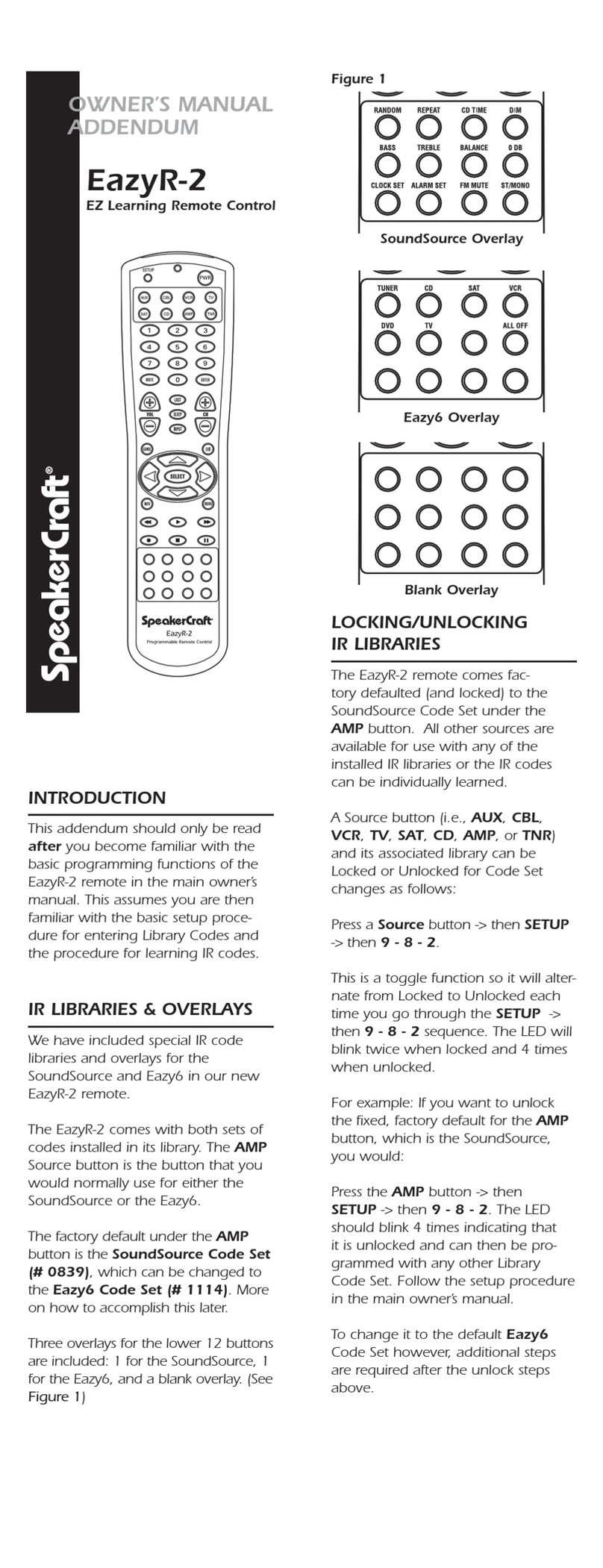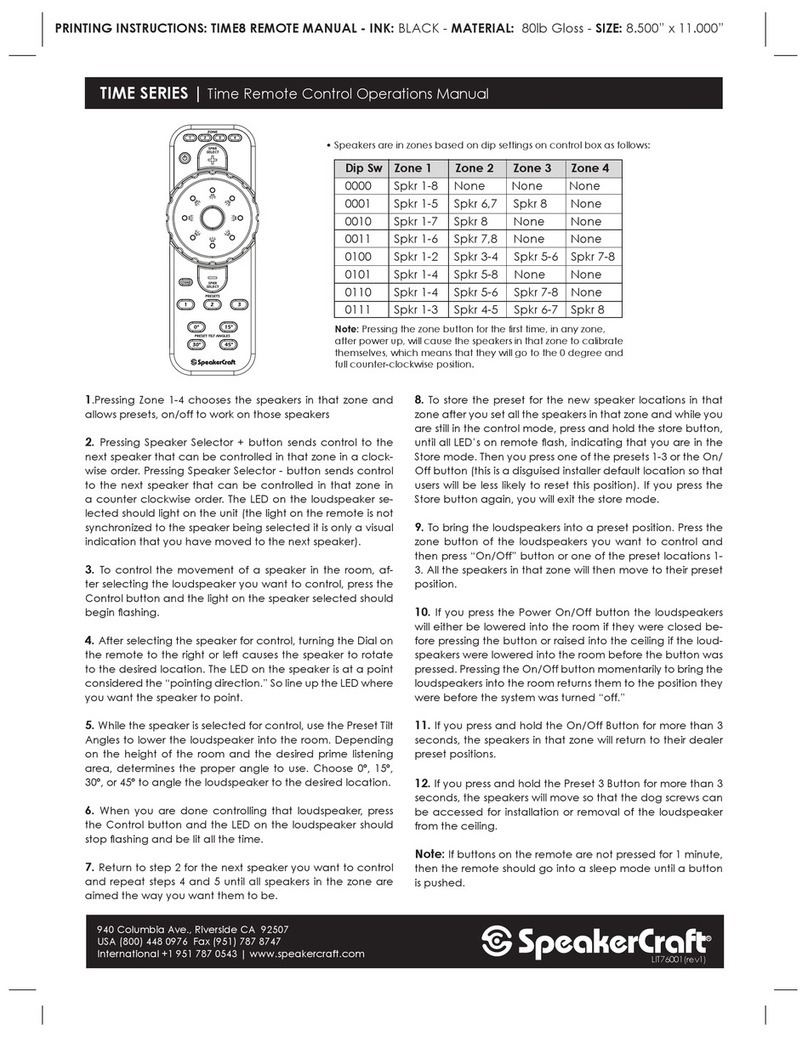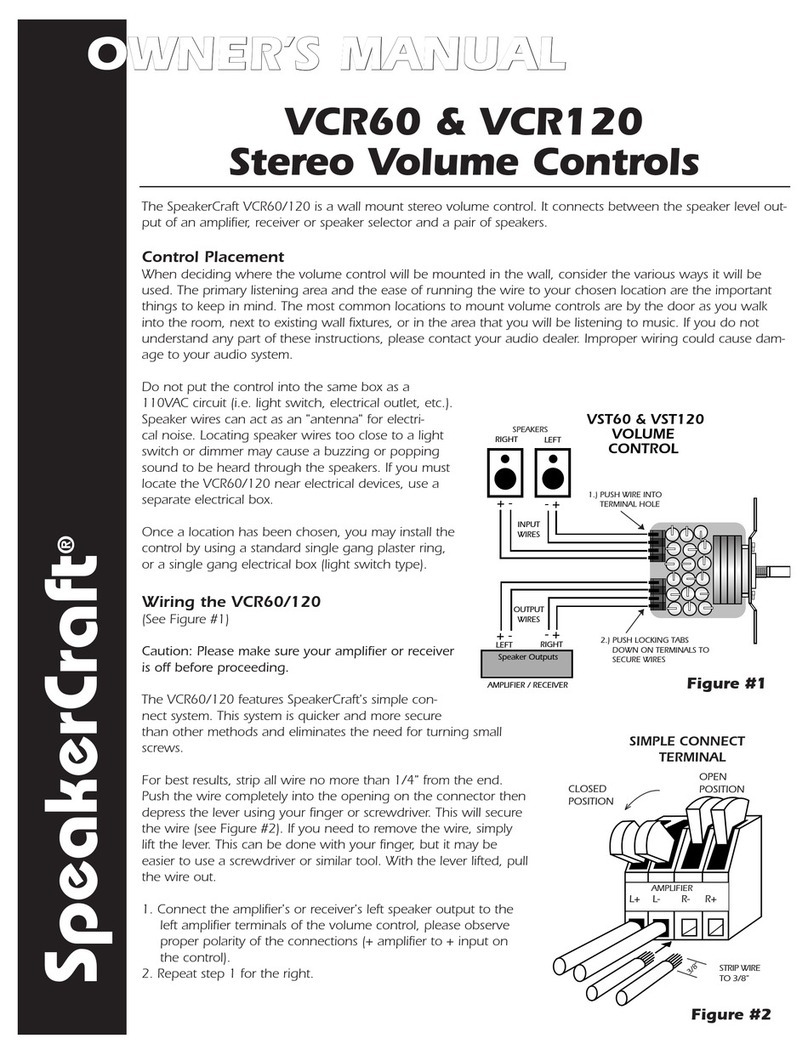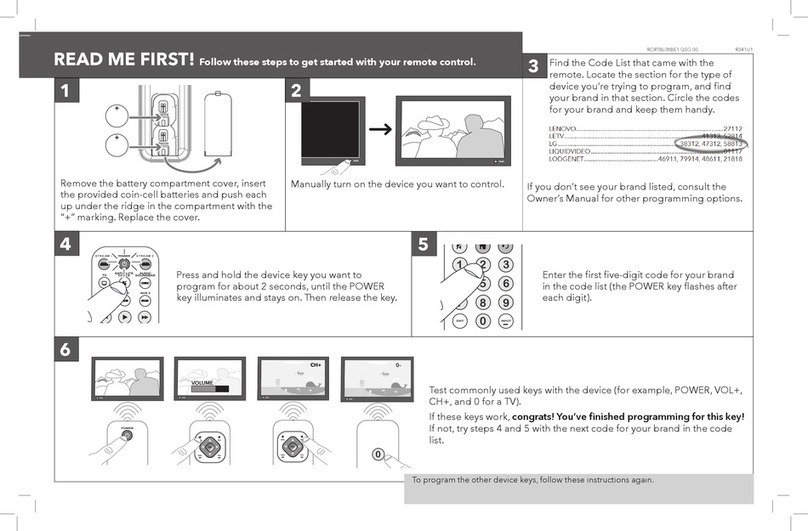In others, it may be necessary to remove the internal emitter from its
shell so that it will fit in tiny chassis places. In this case, use the thin
edge of a knife to carefully pry the lower cover from the shell of the
emitter. Gently ease the tiny emitter and lead from it’s nest within the
shell. Use heat shrink tubing, or other insulating means, to prevent
shorting of the exposed leads.
Fig. 4
2
SpeakerCraft
SpeakerCraft •1650 Seventh Street, Riverside, CA 92507 •Phone 1-800-448-0976 •Fax 888-599-9059
www.speakercraft.com
LIMITED 5-YEAR WARRANTY
SpeakerCraft warrants this product to be free of defects in materials or
workmanship. This extends for five years from the date of purchase
by the original consumer. Any products returned to SpeakerCraft and
found to be defective by SpeakerCraft within the warranty period will
be repaired or replaced, at SpeakerCraft’s option, at no charge.
SpeakerCraft will not be responsible for the actual cost of installation
or removal of the product, nor for any incidental or consequential
damages. Some states do not allow the exclusion or limitation of inci-
dental or consequential damages, so the above limitation may not
apply to you. This warranty gives you specific legal rights. You may
have additional legal rights that vary from state to state.
Other Emitter Placements
Since the IRE-1.0 has high output from it’s curved top (See Fig. 4),
you may attach it to other surfaces nearby, if the installation permits.
(See Fig. 5)
Use the higher power setting (NOT Blaster Power) on the connecting
block or terminator, if so provided.
Some installers like the option of placing the emitter completely inside
a component, as near as possible to the IR sensor, for a clean external
appearance. In some cases, the whole emitter can be so placed.
®
